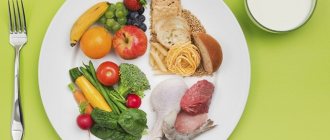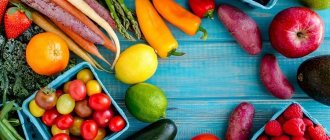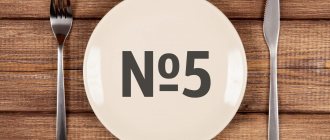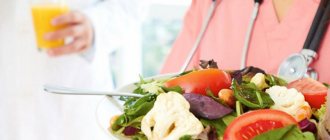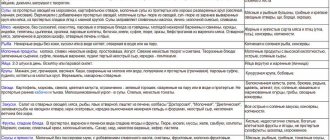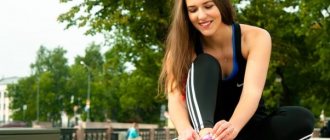Table No. 14 is designed for people suffering from phosphaturia. This is a metabolic disorder in which the urine becomes sharply alkaline, and phosphate salts begin to settle in the form of stones. Often this problem is accompanied by increased calcium excretion. The causes of this condition can be both congenital pathologies and acquired urinary tract infections: metabolic products of bacteria become alkalized, which leads to the precipitation of phosphorus and calcium salts. Whatever the reasons, treatment should be prescribed by a doctor, and diet will be an addition to therapy.
Chemical composition and energy value of dietary table No. 14
Protein: 85–90 g (including approximately 45% animal protein). Fats: 70–80 g (including at least 30 g of vegetable fats). Carbohydrates: 300–350 g. Daily calorie content: 2,200–2,400 kcal. Free liquid: 2.5–3 l. Table salt: up to 6–8 g. Vitamins: retinol (A) – 0.6 mg, riboflavin (B2) – 1.9 mg, thiamine (B1) – 1.9 mg, nicotinic acid (B3) – 23 mg, ascorbic acid (C) – 130 mg. Macroelements: sodium - 4.4 g, potassium - 4.7 g, calcium - 0.9 g, phosphorus - 1.9 g, magnesium - 0.4 g. Microelements: iron - 30 mg. Optimal food temperature: from 15 to 65 degrees Celsius.
The essence of the diet
Table number 14 aims to stop the formation of phosphorus-calcium salt precipitate and change the urine reaction from excessively alkaline to acidic. Diet No. 14 satisfies the patient’s physiological needs for energy and nutrients.
Energy content varies between 2100-2700 calories, while increased consumption of vitamins is provided. While following a therapeutic diet, you need to monitor the amount of food you eat, since using the menu for more than one week can add a couple of extra pounds.
Chemical composition of the daily diet:
- Carbohydrates – 350-400 grams;
- Proteins – 65-80 grams (mainly of animal origin);
- Fats – 80-90 grams.
Table number 14 for urolithiasis has no restrictions on the use of sodium sulfate. The daily amount of salt is standard – 10-12 grams.
The volume of free liquid intake must always be kept under control - a person should not be allowed to drink less than the 2-2.5 liters prescribed in the diet.
Recommended products and dishes of the diet table No. 14
Bread: any, a variety of flour products. Soups: based on weak low-fat meat broths with the addition of cereals or pasta. Meat dishes: any. Fish dishes: any. Side dishes: any water-based cereals; vegetables such as pumpkin and green peas are acceptable. Dairy products: excluded, except for sour cream in small quantities in dishes. Eggs: in any form up to 1 egg per day. Snacks: mushrooms, meat and fish snacks are allowed. Sauces: based on meat and mushroom broths. Sweet dishes: sour fruits and berries, jelly, confectionery, sugar, honey, fruit sorbets. Drinks: tea, coffee, fruit drinks, rose hip decoction. Fats: any, except animal fat, lard.
Recipes for Table No. 14
You can eat any kind of meat, but almost all vegetables are contraindicated.
Cream of mushroom soup with rice
Cook the meat broth. Take 600 ml, the rest can be frozen for future use. Fry 250 grams of frozen or fresh mushrooms in a frying pan with butter or bake in the oven for half an hour. Cook 100 grams of rice. Grind the rice and mushrooms in a blender, adding broth to the required consistency. Serve with sour cream.
Pork tenderloin in puff pastry
Cook the meat broth. Cool. Rub 800 grams of pork tenderloin with salt, pepper, olive oil, let stand for 1-2 hours. Fry until golden brown in a dry frying pan. Grind 350 grams of champignons in a blender, fry for 1-2 minutes in a frying pan with turmeric and rosemary. Roll out a sheet of dry dough. Add mushrooms. Put in the pork. Pinch the dough, brush with egg, sprinkle with sesame seeds, bake for about half an hour until the dough is ready. Cut into portions. Melt 50 grams of butter in a frying pan. Cut another 350 grams of champignons into slices and fry in oil. Add a tablespoon of flour, fry until golden brown, pour in cold broth in a thin stream, stirring continuously. The sauce should be thick. Place 1-2 spoons of sauce on a plate and top with a piece of baked tenderloin.
Oatmeal pancakes with apple
Mix 1 teaspoon of yeast with an equal amount of sugar, add 2 tbsp. add water and let stand for 10–15 minutes for the yeast to foam. Mix half a glass of oatmeal with 2 tbsp. spoons of oatmeal (oatmeal). Pour a glass of boiling water and let it steam. Add 0.5 cups of wheat flour, 3 tbsp. spoons of sugar, mix. Cool to a temperature that is pleasant to the skin (36–38 degrees), add the prepared yeast. Stir. Grate the apple, add to the dough, stir well again. Let stand for about half an hour, after which do not stir the dough, remove it with a spoon from above. Fry over low heat with a lid.
Sample diet menu No. 14
First breakfast: herring, buckwheat porridge, coffee. Second breakfast: liver pate, fruit drink. Lunch: chicken noodle soup, grilled chicken, rice, tea. Afternoon snack: jelly. Dinner: pumpkin casserole with meat, tea. At night: rosehip decoction.
Sources:
- Order of the Ministry of Health of the Russian Federation No. 330 “On measures to improve clinical nutrition in medical institutions of the Russian Federation” dated 05.08.2003
"Sour" menu
Diet table No. 14 does not have any specific menu - the diet is compiled and adjusted individually, using the list of permitted products and taking into account the degree of development of the disease.
Sample menu for the week:
Monday
- Breakfast: buckwheat porridge with meat gravy, oat broth;
- Lunch: a glass of lingonberries;
- Lunch: fish soup, lentil and pea puree;
- Afternoon snack: sandwich with sausage, sea buckthorn juice;
- Dinner: boiled squid with rice side dish.
Tuesday
- Breakfast: millet porridge with soft-boiled egg, tea with lemon;
- Lunch: baked pumpkin;
- Lunch: meat broth, dumplings with butter;
- Afternoon snack: meringue, rosehip decoction;
- Dinner: krupenik with minced meat, apple and lemon juice.
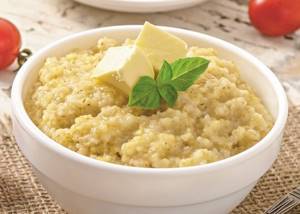
Wednesday
- Breakfast: pasta with butter;
- Lunch: sour berry jelly;
- Lunch: rice soup with pieces of beef, pea puree;
- Afternoon snack: marshmallows, homemade lemonade;
- Dinner: sweet pilaf with prunes, wheat bran decoction.
Thursday
- Breakfast: protein omelet, gooseberry decoction;
- Lunch: a glass of red currants;
- Lunch: chicken soup with pasta, boiled beef with rice;
- Afternoon snack: meringue, cranberry juice;
- Dinner: meat soufflé with noodles, apple compote.
Friday
- Breakfast: wheat porridge with fish quenelles, pomegranate juice;
- Lunch: apple-pumpkin pudding;
- Lunch: sea bass chowder, meatballs in tomato sauce;
- Afternoon snack: lingonberry pie, oat broth;
- Dinner: grilled cod, red currant juice.
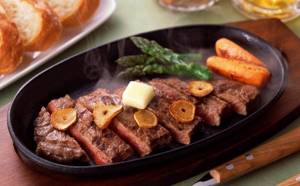
Saturday
- Breakfast: oatmeal and sour apple;
- Lunch: steamed viburnum with honey;
- Lunch: shrimp soup, turkey cutlets;
- Afternoon snack: oatmeal cookies, lingonberry juice;
- Dinner: baked mackerel with permitted vegetables.
Sunday
- Breakfast: rice porridge with chicken cutlet, wheat bran decoction;
- Lunch: pumpkin-sea buckthorn puree, bread with butter;
- Lunch: mushroom soup, a piece of oven-baked duck;
- Afternoon snack: biscuits, bread kvass;
- Dinner: pork chop with green peas, apple juice.
It is recommended to drink natural sour-mineral water on an empty stomach and between meals.
Menu for children
Diet number 14 for children does not differ much from the diet for adults - exactly the same products remain permitted, and the same ones are prohibited.
The baby's menu should consist of all kinds of cereals cooked in water, meat and fish products. Vegetables and fruits allowed by the diet should be present in the diet daily.
Daily menu option for children:
- Breakfast: buckwheat porridge with apple, sweet tea;
- Lunch: steam omelette, wheat bran decoction;
- Lunch: soup with chicken meatballs, pancakes with condensed milk;
- Snack: stewed carrots with butter;
- Dinner: boiled fish, lingonberry juice.

Products such as vegetables, fruits, milk and its derivatives in everyday life are the basis of the diet of a growing organism. With their limitation, children's immunity decreases, which is why it is so important to maintain high physical activity, avoid stressful situations and hypothermia.
Reviews and recommendations from doctors
Experts note that the 14 table diet meets the nutritional needs of the human body and should be prescribed for a long period. It really helps to change the reaction of biological fluid in an acidic direction and increases the volume of urine per day. However, if there are large stones in the excretory tract, only surgical intervention will help.
Reviews about the therapeutic diet are mostly positive. Patients note the high effectiveness of table 14 for phosphaturic diathesis. In addition, the list of allowed foods is quite large, which allows you to experiment with dishes and not expose your body to stress.
Impact on the body
Phosphaturia is a condition in which there is an increase in calcium levels in the alkaline environment of the urine. In addition, it is characterized by a violation of the required ratio of phosphorus and calcium. Therapeutic nutrition promotes:
- increasing urine acidity to 7.0 pH;
- the breakdown of salts;
- reducing the concentration of phosphates;
- increase in daily diuresis.
By consuming plenty of fluid and including a number of recommended foods in the diet, the elimination of calcium salts is accelerated, which prevents the formation of stones.
Do's and don'ts
Recommended and excluded foods and dishes of the “14 table” diet:
Table “What is allowed and what is not allowed”
| Products and dishes | What is possible | What not to do |
| Bread and flour products | Different kinds. Flour products with limited milk and yolks. | — |
| Soups | On weak meat, fish, mushroom broth with cereals, noodles, legumes. | Dairy, vegetable and fruit soups. |
| Meat and poultry | Various types in any preparation. | Smoked meats. |
| Fish | Various types in any preparation. Small quantities of canned fish. | Salted, smoked fish. |
| Dairy | Only a little sour cream in dishes. | Milk, fermented milk drinks, cottage cheese, cheese. |
| Eggs | In various preparations and dishes, 1 egg per day. | Limit the yolks. |
| Cereals | Any in a variety of preparations, but without milk. | |
| Vegetables | Green peas, pumpkin, mushrooms. | Other vegetables and potatoes. |
| Snacks | Various meats, fish, seafood, soaked herring, caviar. | Vegetable salads, vinaigrettes, canned vegetables. |
| Fruits, sweet dishes, sweets | Sour varieties of apples, cranberries, lingonberries, compotes, jellies and jelly made from them. Meringues, snowballs. Sugar, honey, confectionery, popsicles. | Other fruits and berries, sweet dishes with milk. |
| Sauces and spices | Mild sauces based on meat, fish, and mushroom broths. Spices in very limited quantities. | — |
| Beverages | Weak tea and coffee without milk. Rosehip decoction, cranberry or lingonberry fruit drinks. | Fruit, berry and vegetable juices. |
| Fats | Butter, ghee and vegetable oils in their natural form and for cooking. | Limit meat and cooking fats. |
Daily norm of BZHU and diet
With this diet, the patient needs to consume up to 2800 kcal. Up to 80-100 g of proteins are included in the diet per day. Up to 60% of them should be of animal origin and 40% of plant origin. You need to consume up to 80-100 g of fat per day. The amount of carbohydrates is limited to 400-450 g. Salt consumption should not exceed 12 g. Drinking regime is required. Drink at least 2 liters of water per day. Food should be taken 4-5 times a day in small portions.
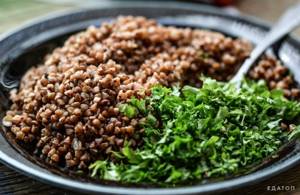
BJU consumption standards.
List of prohibited products
In order to prevent the formation of alkaline sediment and phosphate stones in the kidneys, it is recommended to completely exclude the following ingredients from the daily diet:
- Any types of dairy and fermented milk products, with the exception of sour cream.
- Cereal, fruit and vegetable soups with the addition of whole milk and dairy cream.
- Any types of vegetables, including potatoes, with the exception of those included in the list of permitted ones.
- Juices from berries, fruits and vegetables.
- Butter baked goods and confectionery products prepared with the addition of milk.
- Products of animal origin, marinated, salted and canned, as well as smoked products.
A strict ban on the consumption of dairy and fermented milk products is due to the fact that milk in a whole or fermented state contributes to a change in the pH of the internal environment towards alkalization, which creates favorable conditions for the formation of phosphate kidney stones.
